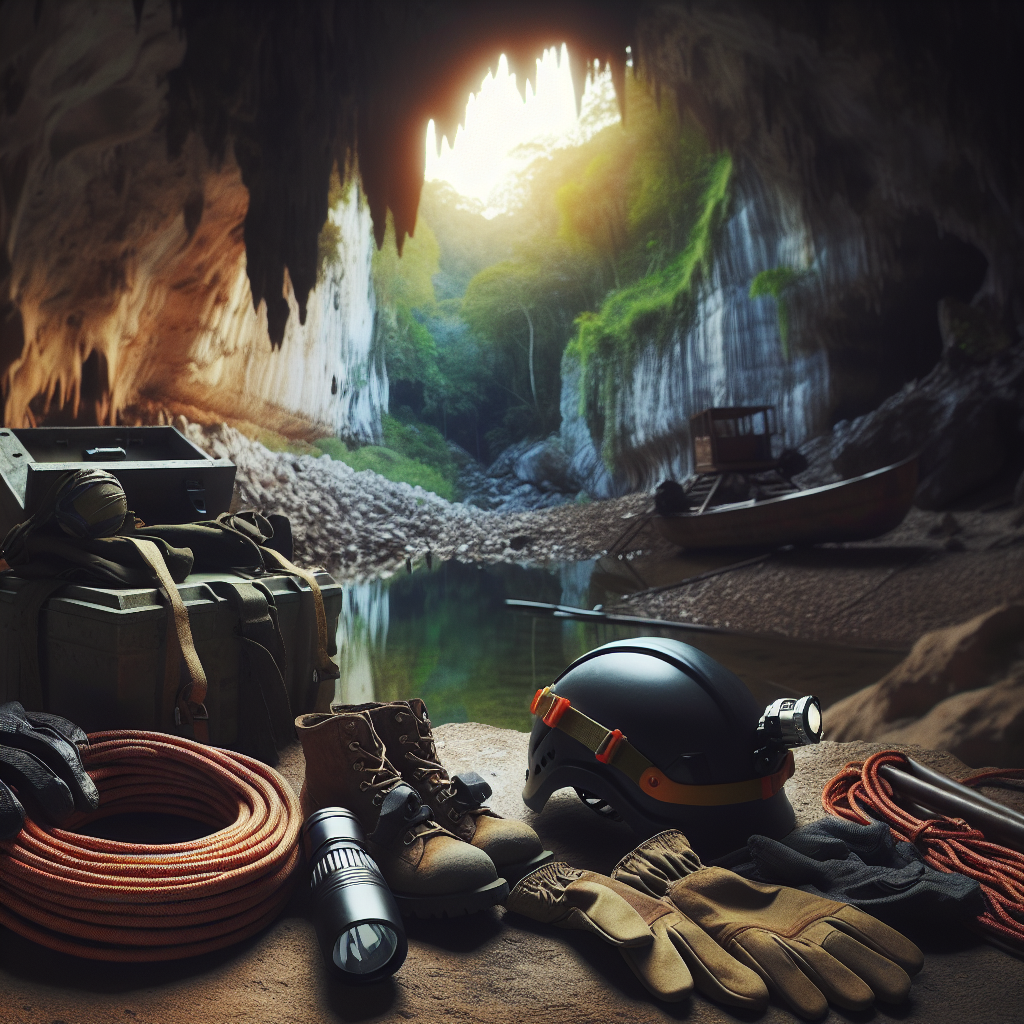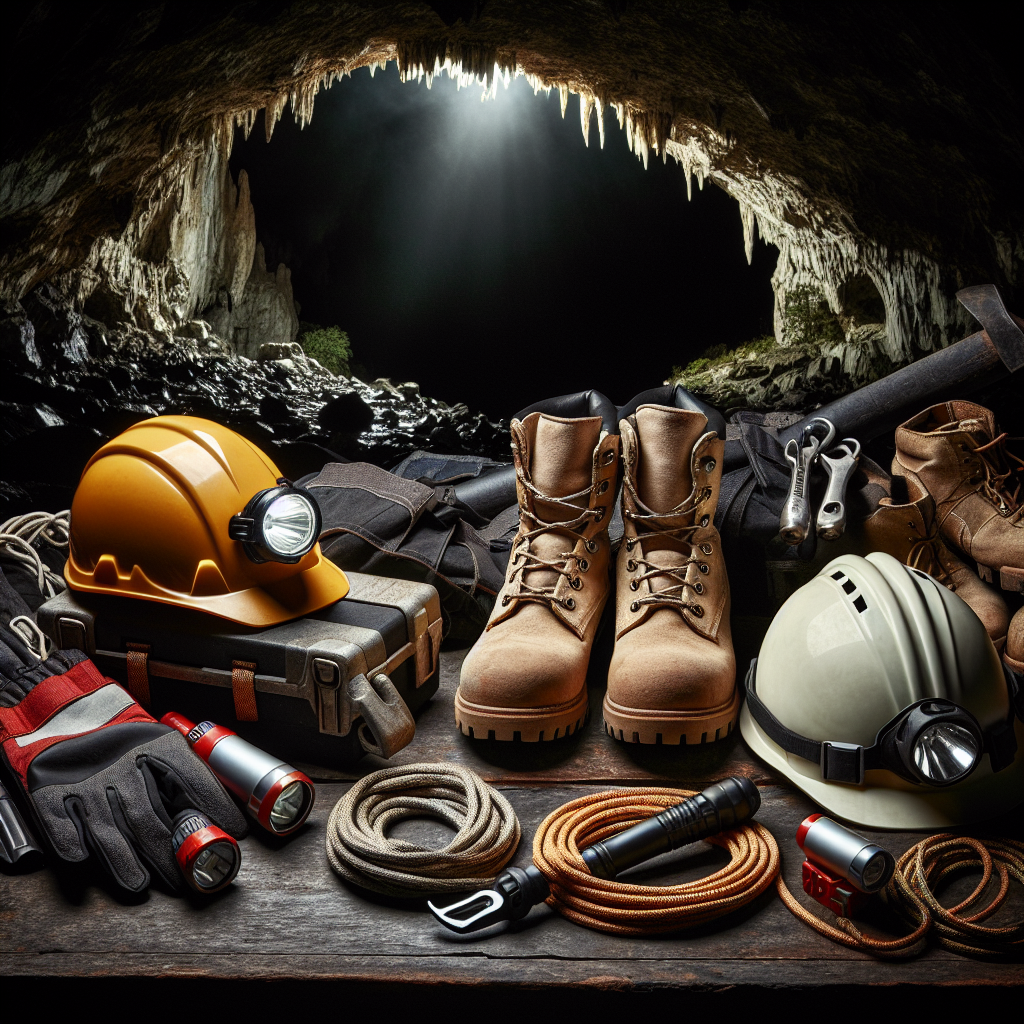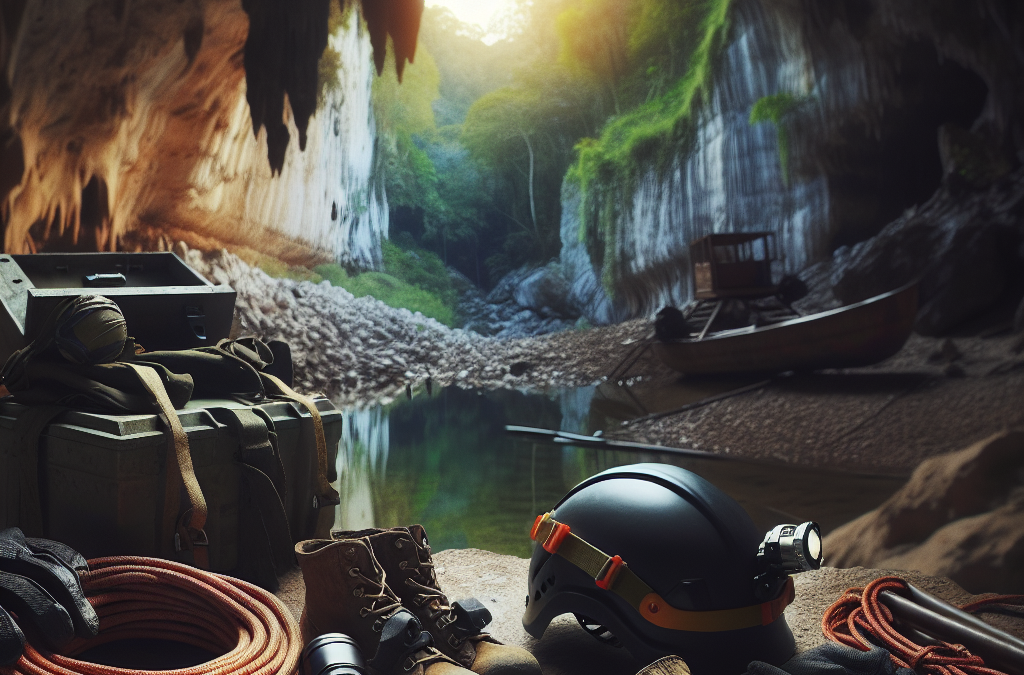You’re about to embark on a thrilling adventure beneath the earth’s surface! In the article “Caving For Beginners: Exploring Underground Safely”, you’ll find a practical guide to equip yourself with the knowledge and techniques needed for your first step into the breathtaking world of caving. It’s filled with practical advice, safety guidelines, best practices and must-have gear to ensure your caving experience is not only exciting but also safe. No mountain too high, no cave too deep – your thrilling underground journey starts here!

Understanding Caving
Caving, also known as spelunking, is a recreational outdoor activity that involves exploring wild cave systems. As a caver, you can appreciate nature’s artistry carved into rock formations and witness the wonder of geological evolution. This activity is not for everyone as it requires a certain level of physical fitness, mental toughness, and respect for the environment. But for those who dare to step into this world of mystery and beauty, the rewards are captivating.
Definition and Overview of Caving
Caving is an adventurous activity where you explore natural caves and their internal systems. It’s an amazing opportunity to witness unique geological formations, underground rivers, and fauna that have adapted to live in darkness. Caving requires specific skills, equipment, and precautionary measures to navigate safely in a cave and to protect the cavern’s diverse ecosystems.
Benefits of Caving
Apart from the exhilaration of exploring mysterious and often completely untouched places, caving has several benefits. It provides a great workout as it involves climbing, crawling, and tight squeezing. It’s also a great way to relieve stress and enjoy the wonder of nature. Achieving the goal of navigating through challenging passages can boost your confidence and enhance your problem-solving skills.
Different Types of Caving
There are several types of caving, each offering a unique experience. Some common types include lava caving where you explore caves formed by volcanic activity, sea caving that involves caves formed by ocean waves, and glacier caving which takes place in ice caves formed within glaciers. There’s also show caving where you visit commercial caves that have guided tours and amenities.
Skills Required for Caving
To assure a safe and enjoyable caving experience, you’ll need to develop certain skills and knowledge.
Physical and Mental Preparedness
Physical strength, stamina, and flexibility are essential for caving. You’ll be maneuvering through narrow tunnels, climbing slippery rocks, and crawling in tight spaces, so it’s important to be prepared. Apart from physical fitness, good mental health is equally important. Remaining calm in challenging conditions, maintaining clear-headed judgment, and overcoming claustrophobia are vital.
Navigation Skills
Navigating underground caves can be tricky because of the complex and maze-like structures. Learning to read cave maps, use a compass, and identifying landmarks are fundamental navigational skills needed for caving.
Climbing and Squeezing Techniques
Caves often involve vertical passages that require climbing or rappelling skills. Expertise in various climbing techniques, as well as the use of the right equipment, is necessary. Also, given the nature of cave passages, learning squeezing techniques would help navigate through tight spaces.
Basic First Aid and Survival Skills
Knowing basic first aid procedures and having survival skills are crucial when you’re far from immediate help. From treating minor scratches and bruises to addressing hypothermia and fractures, it’s important to be prepared. Survival skills such as knowing how to source water or signal for help could be invaluable in case of any unforeseen events.
Essential Caving Equipment
To safely navigate the cave, the right equipment is necessary. Here’s what you’ll need.
Helmet and Headlamp
A sturdy helmet will protect your head from low ceilings, while a reliable headlamp will light up your path. Always bring extra batteries for your headlamp.
Proper Clothing and Footwear
Wear abrasion-resistant clothes that provide some warmth and allow flexibility. Your footwear should be sturdy, have a good grip, and preferably be waterproof.
Carabiner and Harness
For vertical caves, you’ll need a carabiner and harness for climbing and descending safely. Familiarize yourself with how to use these correctly.
Rope and Descending/Ascending devices
Ropes and devices like descenders and ascenders are essential for managing vertical cave passages. Ensure you use the right kind of rope for caving and have the knowledge to use the devices.
Backup Lighting
Always carry backup lighting solutions as a precautionary measure in case your primary light source fails.
Choosing Your First Cave for Exploration
Researching Suitable Beginner Caves
For your first caving experience, opt for simpler caves with minimal obstacles and passages that are easy to navigate. Use reliable resources to research and find suitable caves. Local caving clubs and online caving forums can provide valuable insights.
Considerations for Choosing a Cave
When choosing a cave, consider your level of skill, the distance from home, the cave’s difficulty level, and the duration of the trip. It’s also essential to check if the cave is open to the public and safe for exploring.
Checking Legal Permissions
Before you step into the cave, ensure you have the necessary legal permissions. Some caves might be located on private property or within protected areas and might require special permits to access.

Understanding Cave Environments
Types of Rock Formations
Understanding different rock formations can enhance your caving experience. Stalactites, stalagmites, flowstones, and helictites are only a few examples of what you might encounter on your journey.
Cave Ecosystems
Caves host a unique, fragile ecosystem full of rare flora and fauna. Learning about them will not only enrich your experience but also help you avoid disturbing these delicate ecosystems.
Effect of Weather on Caves
Climate and weather conditions greatly impact caves. The outside temperature and rainfall can influence the cave’s humidity and water levels. Understanding these effects will help you anticipate any changes in the cave environment and prepare accordingly.
Essential Safety Tips for Caving
Safety should always be your top priority when going caving.
Caving With a Group
Never venture into a cave alone. Always go with a group and make sure to stay together at all times.
Maintaining Your Boundary
Maintain a safe distance from risky areas such as loose rocks or high drops.
Avoiding Dangerous Areas
Avoid areas that may be susceptible to floods, loose rock, or any area that may not be stable.
Understanding the Risk of Hypothermia
It’s possible to become hypothermic in a cold and wet cave. Plan and prepare for the conditions you expect to encounter during your cave exploration.
Preservation and Respect of Caves
When exploring the underground world, it’s crucial to remember the importance of preserving it.
Understanding the Cultural and Natural Significance
Many caves are sites of historical, archaeological, and geological interest. They may contain ancient bones, drawings, or unique geological formations that are invaluable records of our past.
Leave No Trace Principles
Adopt the Leave No Trace principles and make sure nothing you bring into the cave stays behind. It’s also important not to remove anything from the cave.
Respecting Wildlife and Not Disturbing Formations
The wildlife in a cave should be observed and not disturbed. Similarly, refrain from touching rock formations as even the slightest touch can impact their growth.
Learning from Experienced Cavers
It’s always advantageous to learn from those with experience.
Joining a Caving Club
Joining a local caving club is a great way to learn new skills and find mentors. Plus, it’s also a good way to meet new friends with common interests.
Attending Caving Workshops
Caving workshops can provide invaluable hands-on training and cover everything from basic to advanced caving techniques.
Learning from Expert Cavers
Experienced cavers can offer valuable insights, expert tips, and share personal experiences. They can teach you useful techniques, safety tips, and steps for preserving cave ecosystems.
Emergency Situations in Caving
Being prepared to handle emergency situations can save lives.
Recognizing and Avoiding Potential Dangers
Being able to identify and avoid potential dangers in a cave is crucial. Watch out for unstable rocks, slippery surfaces, sudden drops, or any other potential risks that could lead to accidents.
What to Do When You’re Lost
In case you lose your way, stay calm and avoid panic. Refer to your map and try to identify landmarks. If you’re unable to find your way back, stay put and wait for help.
First Aid for Caving Injuries
In the event of sustaining any injuries, applying first aid can minimize damage. Always carry a well-stocked first aid kit with you and know how to use it.
Emergency Evacuation
In case of a major accident or sudden change in cave conditions, you may need to evacuate immediately. Practice and plan your emergency exit route as part of your pre-cave preparation.
Further Development and Training in Caving
Advanced Caving Techniques
Once you’ve mastered the basics and developed an enthusiasm for caving, you might want to learn advanced techniques such as single rope techniques (SRT), cave diving, or cave surveying.
Exploring More Challenging Caves
As you gain more experience and confidence, you could try exploring more challenging caves and passages, thereby pushing your limits and enhancing your skills.
Training Courses and Certifications
Enroll in professional caving courses and obtain certifications. They add to your knowledge, enhance credibility, and might even open up opportunities for you to guide cave tours or rescue operations.
In conclusion, caving is an exhilarating activity that pushes your physical and mental capacity, allows you to appreciate nature’s marvels, and imparts valuable skills. Always remember, safety comes first and respect for the cave environment is utmost. Happy caving!

